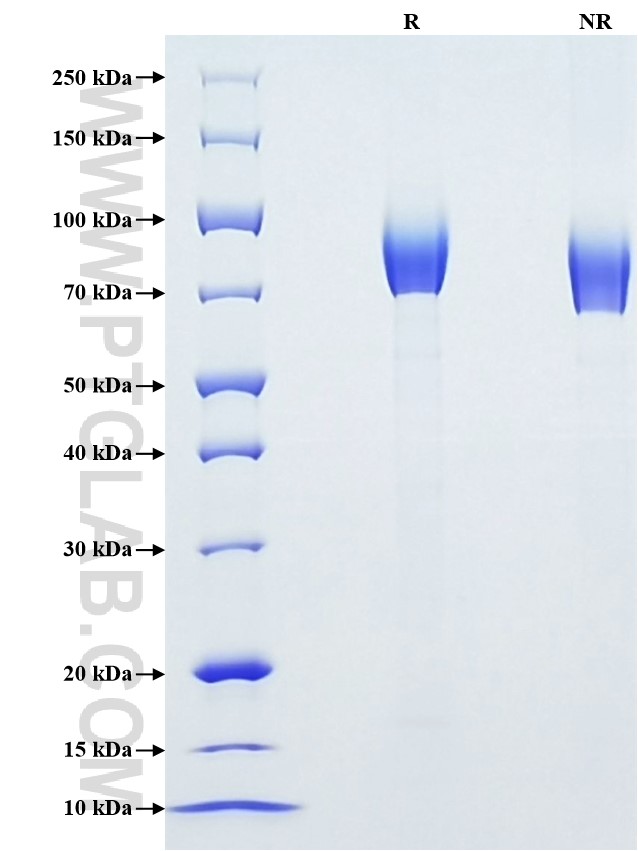Recombinant Mouse ICAM-1/CD54 protein (His Tag)
种属
Mouse
纯度
>90 %, SDS-PAGE
标签
His Tag
生物活性
未测试
验证数据展示
产品信息
| 纯度 | >90 %, SDS-PAGE |
| 内毒素 | <0.1 EU/μg protein, LAL method |
| 生物活性 |
Not tested |
| 来源 | HEK293-derived Mouse ICAM-1 protein Gln28-Asn485 (Accession# P13597-1) with a His tag at the C-terminus. |
| 基因ID | 15894 |
| 蛋白编号 | P13597-1 |
| 预测分子量 | 51 kDa |
| SDS-PAGE | 70-100 kDa, reducing (R) conditions |
| 组分 | Lyophilized from 0.22 μm filtered solution in PBS, pH 7.4. Normally 5% trehalose and 5% mannitol are added as protectants before lyophilization. |
| 复溶 | Briefly centrifuge the tube before opening. Reconstitute at 0.1-0.5 mg/mL in sterile water. |
| 储存条件 |
It is recommended that the protein be aliquoted for optimal storage. Avoid repeated freeze-thaw cycles.
|
| 运输条件 | The product is shipped at ambient temperature. Upon receipt, store it immediately at the recommended temperature. |
背景信息
Intercellular adhesion molecule 1 (ICAM-1, also known as CD54) is a transmembrane glycoprotein of the immunoglobulin superfamily and is critical for the firm attachment and transmigration of leukocytes out of blood vessels and into tissues. ICAM-1 is expressed by several cell types, typically on endothelial cells and cells of the immune system, and its expression can be up-regulated by various stimuli, including TNF-α, INF-γ, IL-1 and thrombin. It is a ligand for LFA-1 and Mac-1, serves as a receptor for rhinovirus, and is one of several receptors used by Plasmodium falciparum. ICAM-1 can exist as membrane-bound form (mICAM-1) and soluble form (sICAM-1). The sICAM-1 arises from alternative splicing and proteolysis of mICAM-1 and appears to be associated with leukocyte activation to produce LFA-1.
参考文献:
1. Lawson C, et al. (2009). Pharmacol Rep. 61(1):22-32. 2. Dustin ML, et al. (1986). J Immunol. 137(1):245-54. 3. Marlin SD, et al. (1987). Cell. 51(5):813-9. 4. Staunton DE, et al. (1989). Cell. 56(5):849-53. 5. Berendt AR, et al. (1989). Nature. 341(6237):57-9. 6. Ramos TN, et al. (2014). J Immunol. 192(10):4469-4474.
